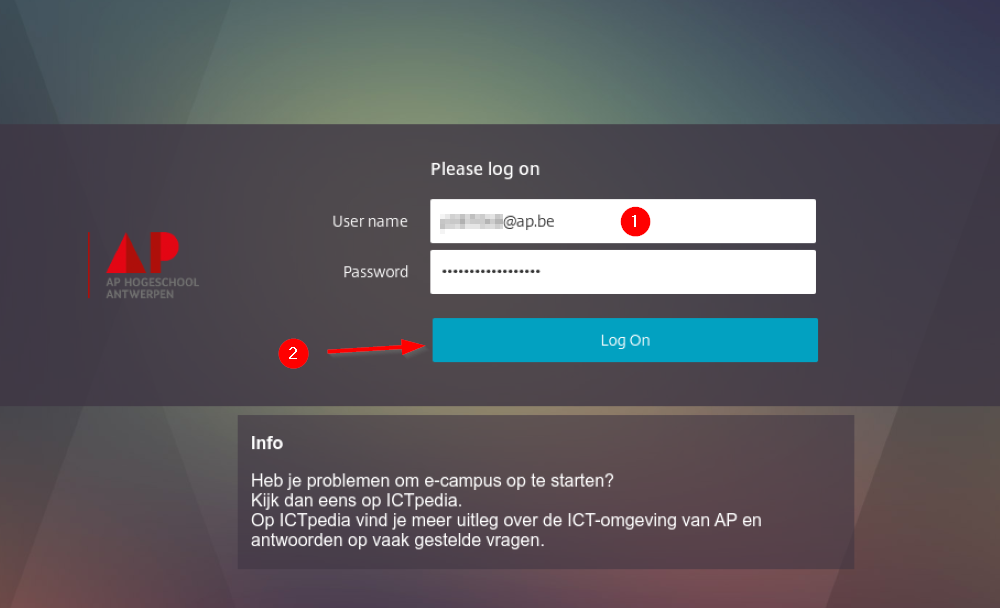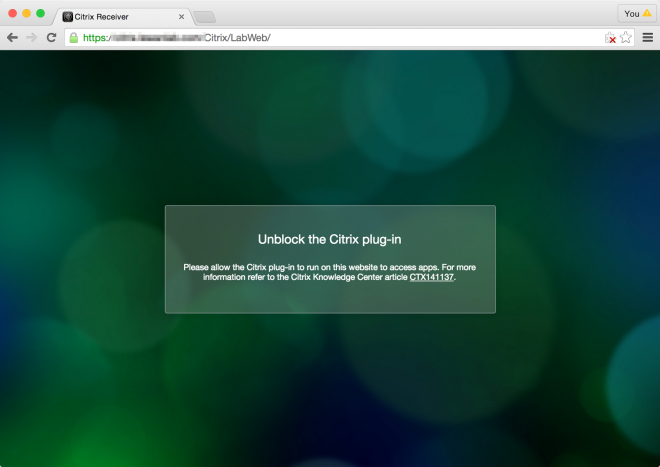Citrix Receiver for HTML5, Citrix Receiver for Chrome, Citrix Workspace app for Chrome, Citrix workspace app for HTML5
Citrix Receiver Chrome App
Solution
Recommended solution: Update the certificates.
Alternatively, you can try this workaround:

Chrome App Citrix Workspace

Close the Citrix Workspace app for Chrome / Citrix Receiver for Chrome.
Open Chrome browser in your Chromebook.
Visit your site.
It will show some error as below.
Now, open the Citrix Workspace app for Chrome or Citrix Receiver for Chrome and it might allow you to access your StoreFront/VDA.
Other possible workaround for specific certificate error:
NET::ERR_CERT_WEAK_SIGNATURE_ALGORITHM error
Latest Firefox and Chrome browsers do not support SHA-1 certificate and StoreFront connection fails with error: NET::ERR_CERT_WEAK_SIGNATURE_ALGORITHM
Citrix Receiver for Chrome/HTML5 or Citrix Workspace app for Chrome/HTML5 cannot establish secure connection and session launch will failNET::ERR_CERT_COMMON_NAME_INVALID error
Chrome requires Subject Alternative Name for SHA-2 certificate, without SAN (Subject Alternative Name) in the SHA-2 certificate, the connection will fail with error NET::ERR_CERT_COMMON_NAME_INVALID
Session launch fails with CERT_COMMON_NAME_INVALID(-200) error dialog
Workaround for NET::ERR_CERT_WEAK_SIGNATURE_ALGORITHM and
NET::ERR_CERT_COMMON_NAME_INVALID:Mozilla:
Enable network.websocket.allowInsecureFormHTTPS from about:config
Chrome:
Chrome by default requires SHA2 Certificate with Subject Alternative Names (SAN)
Add the following registry keys at : SoftwarePoliciesGoogleChromeEnableCommonNameFallbackForLocalAnchors – true
(Note: Chrome need SAN by default)EnableSha1ForLocalAnchors – true
(Note: SHA1 is not supported)
Recommended Solution: Use SHA2 certificates with Subject Alternative Names (SAN).Problem Cause:
CTX134123 - Receiver for HTML5 - Unable to Launch Apps Using HTTPS URL
CTX217352 - How to Collect Logs in Receiver for Chrome and Receiver for HTML5
NET::ERR_CERT_SYMANTEC_LEGACY
From Chrome OS version 66 onwards the SSL certificate from Symantec is distrusted. You can go through https://security.googleblog.com/2018/03/distrust-of-symantec-pki-immediate.html to know more about it.
Workaround: Try general workaround mention above.
Recommended Solution: Update SSL certificates.
Citrix Receiver Chrome
Problem Cause
Download Citrix Receiver For Chrome
CTX134123 - Receiver for HTML5 - Unable to Launch Apps Using HTTPS URL
CTX217352 - How to Collect Logs in Receiver for Chrome and Receiver for HTML5
- Open Google Chrome and browse to https://storefront.lsuhsc.edu
- If this is the first time you have visited the StoreFront site, or if you have recently cleared your Browsing Data, you will be prompted with the window shown below. Click “Detect Receiver”.
- If you receive a message window that says something about “Look for an App in the Store”, just ignore that message and click anywhere away from that message window. Next you should see:
If you already have Citrix Receiver installed on your workstation you will immediately be directed to the StoreFront logon dialog, and you can Skip to Step 10 of this document.
If you were not taken directly to the StoreFront logon page, proceed to click inside the “I agree…” checkbox shown above, and then click the “Download” button. Then look for “Receiver.exe” in the lower left of the Chrome window, and click it. If prompted with a window that asks “Do you want to allow this app to make changes to your device”, click “Yes”. - You will next see the window below:
Click “Start”. Click the checkbox next to the “I accept…”. Then click “Next”. - In the window below you can leave the checkbox blank next to “Enable Single Sign-on”, but it will not hurt anything if you accidentally click this checkbox. Click “Next”.
- In the following window, you can choose whatever your preference, and then click 'Install'. Generally we recommend you leave the checkbox UN-checked:
- The Citrix Receiver install will proceed. At the end, click on “Finish”. (Do not click “Add Account”).
- Go back the Google Chrome window. If you see a button that says “Continue”, click on it.
- You may see the following window. If so, click the checkbox next to “Always allow…” and click “Open Citrix Workspace Launcher”:
Also, If asked by Chrome whether to save your password, click “Never”. - You should now see the StoreFront logon dialog, shown below. Simply log on with your typical LSUHSC User ID and password:
- You will now see your available Citrix desktop connections, similar to the screenshot below:
From the above you can launch your Citrix desktop(s) simply by clicking their corresponding icons shown above. Your desktop should now launch. If you have any standalone Citrix applications, you can click on the “APPS” button depicted above, and launch the application(s) in a similar way. - Once you are finished working in Citrix, be sure to log off your desktop(s) and close any Citrix apps. Then, if you are still logged on to StoreFront, click on the 'gear' icon in the upper right corner, and select “Log off”, as depicted below:

Back to StoreFront Homepage
